Metal Roofing is an excellent roofing solution for homeowners with several benefits including durability, aesthetics, energy efficiency, and sustainability. It can last 50+ years with minimal maintenance, improve resale value, and protect against extreme weather conditions. Contact Jenks Metal Roofing for professional help.
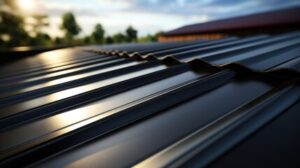
However, there are some things to consider before deciding on metal roofing. Read below to learn more about the three key factors that will help you decide if metal is right for your home:.
Metal roofs can be more expensive than other roofing types, but they offer many long-term benefits that can offset the initial cost. Some of these benefits include durability, longevity, and energy efficiency. They also offer a variety of style and color options, making them suitable for nearly any architectural style.
In addition to the cost of the materials, a metal roof requires additional expenses such as installation labor and accessories. Installation costs are dependent on the type of metal used, roof complexity, and local labor rates. In general, the more complex a roof is, the more it will cost to install.
The most common type of metal roofing is the standing seam metal roof. Standing seam metal roofs have vertical panels that feature raised seams, giving them a modern, sleek appearance. They are durable, low-maintenance, and come in a wide range of colors and finishes.
Another type of metal roofing is the exposed fastener metal roof. These roofs have visible fastener heads and can be purchased at big box stores such as Home Depot and Lowe’s. Exposed fastener roofs are more affordable than standing seam metal roofs, but they are not as durable. However, they do offer a number of warranty options, including weathertight warranties.
Choosing the right type of metal roofing for your home depends on several factors, including the climate where you live and your aesthetic preferences. Some types of metal are better suited for certain regions, such as those that have high winds or are close to the ocean. Additionally, some types of metal are more rust-resistant or more durable than others.
A metal roof can be a great option for homeowners who want to protect their homes from the elements. The durability and longevity of a metal roof can significantly increase the value of a home, and it can help reduce energy bills. In addition, a metal roof can provide peace of mind because it is typically backed by a manufacturer’s or installer’s warranty. In most cases, these warranties are transferable if the home is sold. In addition, a metal roof can often lead to lower homeowner’s insurance premiums because it is more fire-resistant and less likely to damage from wind or hail.
Durability
Metal roofs are known for their durability, and they can withstand almost any type of weather condition. They are also very energy efficient, as they help to keep the heat in during winter and cool air in during summer. In addition, they are water resistant and don’t trap moisture like asphalt shingles can.
They are also extremely long-lasting, with many manufacturers offering up to 50-year warranties on their products. They are a great choice for homeowners who want to avoid re-roofing every 12-20 years that is typical of asphalt shingle roofs.
There are several types of metal roofing to choose from, including steel, galvanized steel, aluminum, tin, zinc and terne (zinc-tin alloy). Each metal comes in a variety of thicknesses, or gauges, which impacts the price. A higher-gauge metal will cost more than a lower-gauge one, but the difference in price is not as drastic as you might expect.
The strength and durability of a metal roof depends on the type of metal and the climate in which it is installed. For example, heavy-gauge metal roof panels with concealed fasteners that are installed properly can last a century or more in areas that don’t experience a lot of freeze-thaw cycles. However, light-gauge corrugated metal roofing purchased at your local big-box store might only last a decade before it starts to leak around the exposed fasteners.
A key feature of any metal roof is the corrosion resistance. This is determined by the thickness and coating of the metal. A steel roof with a zinc and aluminum coating, such as galvalume or galvanized aluminum-zinc alloy, is the most durable option. It can withstand salt spray and other harsh chemicals that may be present near coastal homes.
Another benefit of a metal roof is that it doesn’t attract moss and other types of vegetation that can damage asphalt shingles. This is ideal for Seattle’s wet, moss-prone climate. Also, they can be less maintenance-intensive than other types of roofs for homeowners who live in wooded or tree-lined neighborhoods. They shed snow very easily and don’t require frequent sweeping or tarping as they do with other types of roofs.
Appearance
A metal roof is a substantial investment, and your customers want to know that they’re making the right choice. To ensure this, they need to be informed about the different types of metal roofing and their unique benefits and ideal applications.
Whether they’re looking for sleek, contemporary standing seam panels or something that mimics the look of classic materials like slate or wood, metal roofing offers an option for every architectural style. It’s also a great option for homes in rainy climates, as it doesn’t collect as much snow or moisture as traditional shingles.
When most people think of metal roofs, they imagine a barn or utility shed, but modern advances have made it possible to incorporate a metal roof into nearly any home. These roofs are now as stylish as they are durable, and they can add to a home’s value by increasing its curb appeal.
The most popular type of metal roof is corrugated steel. This is a panel system that can be made in a variety of widths and thicknesses, from 29 to 26 gauge. The higher the gauge, the thicker and stronger the panel, making it more resistant to weathering and wear and tear.
Another option is aluminum. This is a lightweight material that’s highly durable and available in a variety of colors and finishes. It can even be customized with a textured coating for added visual interest.
A metal roof can last up to 50 years, and many manufacturers offer warranties that will cover the cost of repairs or replacement in the event of an issue. In addition to the durability of a metal roof, it’s also easy to maintain and clean. It’s recommended that homeowners regularly remove any debris, such as leaves and branches, from their roof to avoid rust and other damage.
If you’re interested in installing a metal roof on your home, contact us today for more information about the process and timeline. We’ll provide you with images of past jobs so that you can see what your new roof will look like and answer any questions you may have.
Energy Efficiency
Most people don’t think of metal roofing as an energy efficient option. They assume that metal roofs will absorb the sun’s heat, causing attic temperatures to rise and energy costs to go up. However, metal roofs actually reflect the sun’s rays rather than absorbing them, keeping attics and rooms much cooler. This effect can be enhanced by adding above-sheathing ventilation (ASV).
ASV is a simple but effective addition to any metal roofing system. It creates an airspace between the sheathing and the metal roof, allowing energy to vent into the atmosphere instead of absorbing it and increasing your utility bills. ASV can be coupled with solar panels for an even greater energy savings.
Using ASV in conjunction with a reflective metal roof can decrease your energy costs by up to 40 percent, saving you thousands in the long run. A metal roof also helps reduce the amount of energy needed to cool your home, reducing your carbon footprint.
In terms of sustainability, there are few roofs as eco-friendly as a metal roof. Because they last for so many years, they use less production energy and produce fewer waste materials than shingle roofs that need to be replaced more often. Plus, if they do need to be replaced, they are 100% recyclable, reducing the volume of waste that goes to landfills.
There are several types of metal roofing systems, each with its own benefits and advantages. Standing seam roofs are the poster child of modern metal roofing, offering sleek panels with vertical seams that run continuously from the ridge to the eaves for a clean, minimalist look. There are also corrugated metal roofs, which provide a classic and durable option, as well as shingles-style metal roofing that can mimic the appearance of traditional shingle roofing.
Another type of metal roofing is made from a blend of recycled aluminum and other metals/materials to offer the look of traditional shingle roofing with the durability of a metal roof. This type of roofing is a good choice for urban areas because it requires minimal maintenance and can be easily cleaned with water or a power washer.


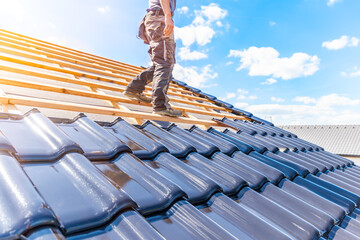
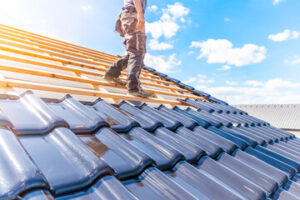
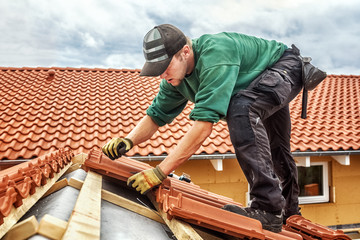
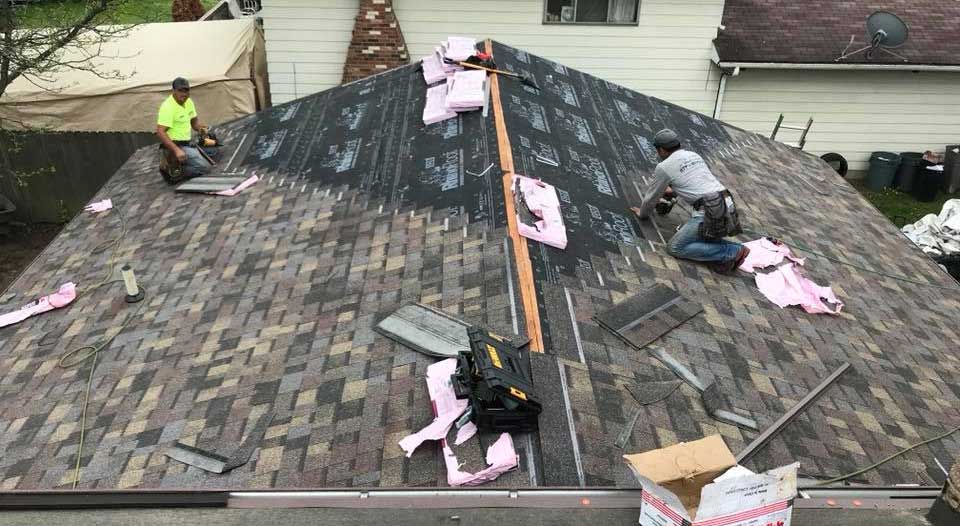
 Gable: Gable roofs are easy to measure, while gambler and mansard roofs are more difficult. Intricate roofing forms require more complicated calculations and waste is often a major issue. This waste is caused by shingles that need to be cut to fit tight spaces or are nailed into place evenly along the roof deck. Other components of a roof include the sheathing and skirt flashing. The finished underside of the eave is known as the soffit.
Gable: Gable roofs are easy to measure, while gambler and mansard roofs are more difficult. Intricate roofing forms require more complicated calculations and waste is often a major issue. This waste is caused by shingles that need to be cut to fit tight spaces or are nailed into place evenly along the roof deck. Other components of a roof include the sheathing and skirt flashing. The finished underside of the eave is known as the soffit.